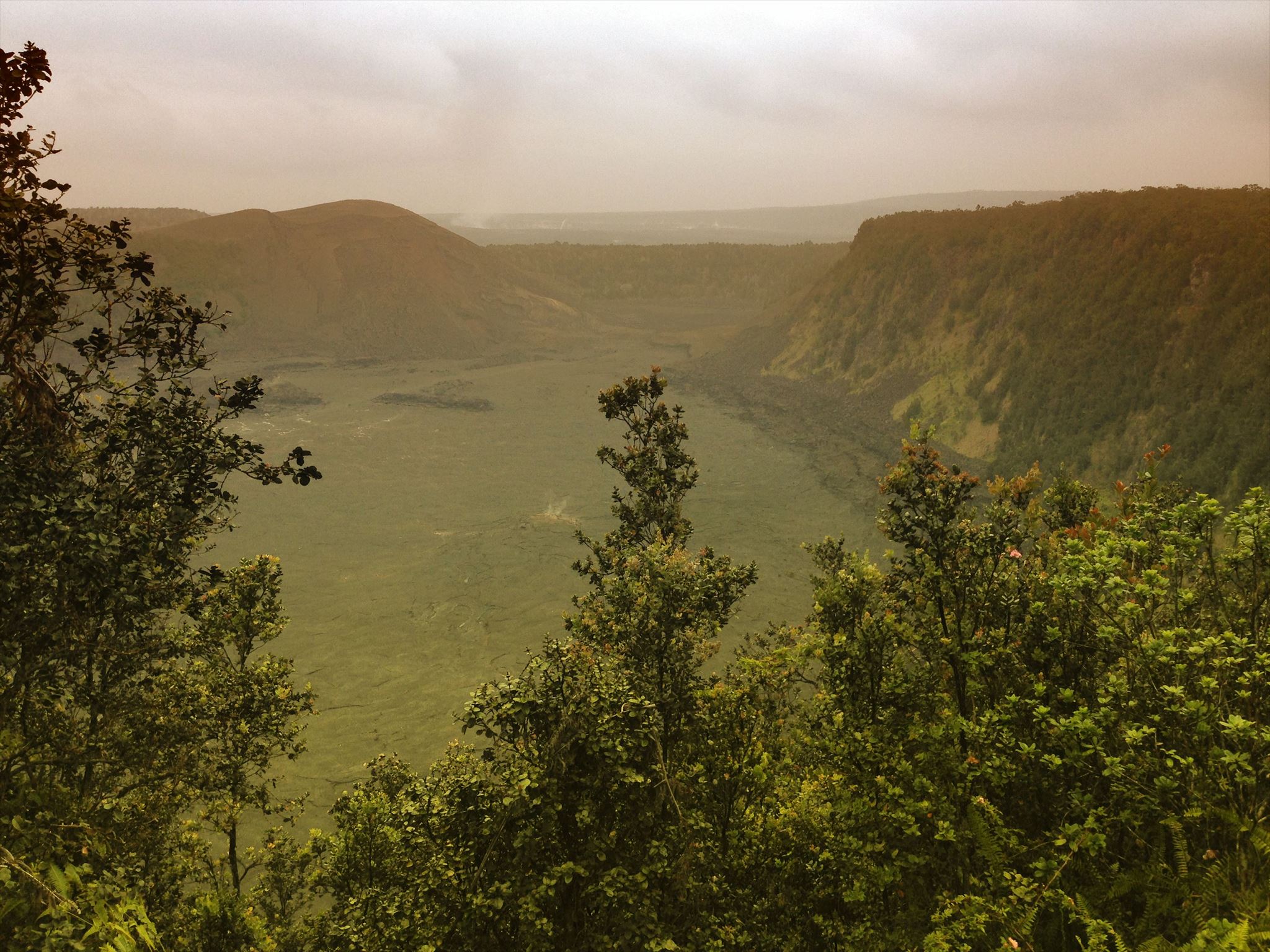Kilauea Iki Lava Lake EarthCache
-
Difficulty:
-

-
Terrain:
-

Size:  (other)
(other)
Please note Use of geocaching.com services is subject to the terms and conditions
in our disclaimer.

The eruption of Kilauea Iki stunned all who came to see it - from its onset on November 14, 1959, to the end on December 20, 1959. Over 750,000 visitors were treated to lava spewing up to 1,900 ft (580 m) into the sky and filling an 800-ft-(244-m) deep double crater with 400 ft (122m) of hot, molten lava - lava with enough energy to generate its own wave action.
Over the course of this 37-day eruption, approximately 133 million yd^3 (102 million m^3) of lava was erupted - enough to fill over 13 million cement trucks. Furthermore the eruption left a 50-ft-(15-m) high bathtube ring, visible today above the crater floor. On some occasions, showers of of lava sprayed across the crater.
Pu’u Pua’i (Gushing Hill), the hill to the west of the lookout, was formed by the highest recorded lava fountain eruption in Kilauea’s history. This immense hill was built layer upon layer by the volcanic fallout from each of Kilauea Iki’s 16-lava-fountaining episodes. On December 17, 1959, during the 15th episode, lava shot 1,900 ft (580 m) into the sky. Large pieces of iPu’u Pua’i also slid down into the lava lake, leaving the elevated islands of lava you see on the crater floor.
You often see steam rising from the terraces and cracks in the crater floor. Steam forms when rainwater percolates down to hot rock below the surface and vaporizes. Steaming cracks attract visitors on cold, windy days, but beware! The steam is scalding hot. These steams also carry white deposits to the surface, which form from dissolved minerals.
To log this cache please send us your answers for the following questions via the GC-contact form before logging it online.
You don´t have to wait for a permission, but we will contact you if there are any problems with your answers.
1. When you look down into the crater, there you can see steam. It indicates that the core of the Kilauea Iki lava lake is still hot and continues to cool. Explain how scientists measured the temperatures in the lake and what temperatures did they measure?
2. From Kilauea there are starting active rift zones. Name the rift zone Kilauea Iki lava lake is located in.
3. Describe the surface of the lava lake in your own words and name the main minerals brought to the surface.
4. Describe how the bathtube ring developed.
sources of information:
https://www.nps.gov/havo/planyourvisit/craterrimtour_puupuai.htm
http://hvo.wr.usgs.gov/kilauea/history/1959Nov14/
http://www.explorationhawaii.com/2013/11/12/hiking-the-kilauea-iki-trail-to-the-thurston-lava-tube/
https://www.nps.gov/havo/planyourvisit/upload/Kilauea-Iki-Trail-Guide-2013.pdf
Volcanism in Hawaii, Volume 2, Washington 1987
http://www.bigislandhikes.com/kilauea-iki-hawaii-volcanoes/
https://www.britannica.com/place/Kilauea
Additional Hints
(Decrypt)
Treasures
You'll collect a digital Treasure from one of these collections when you find and log this geocache:

Loading Treasures